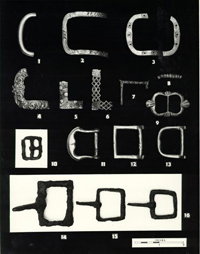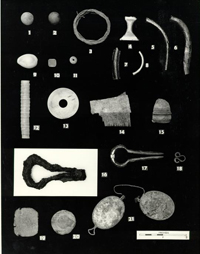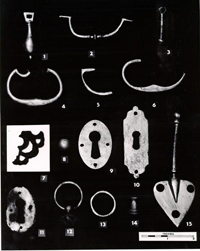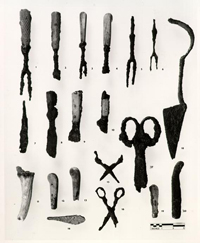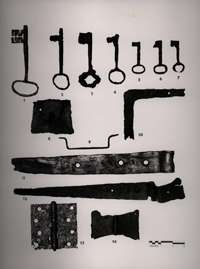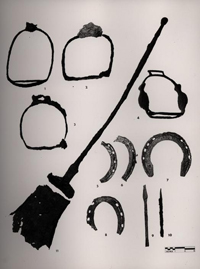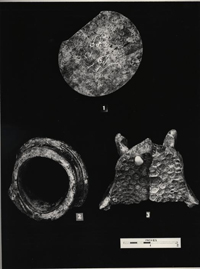Wetherburn's Tavern Archaeological Report, Block 9 Building 00 Lot 20 & 21Originally entitled: "The Wetherburn Site Volume II Part 4A Small Finds and Iron Objects"
Colonial Williamsburg Foundation Library Research Report Series - 1182
Colonial Williamsburg Foundation Library
Williamsburg, Virginia
1990
THE WETHERBURN SITE
Block 9, Area N
Colonial Lots 20 and 21 [#31]
REPORT ON THE ARCHAEOLOGICAL EXCAVATIONS OF 1965-1966
Volume II, Part 4
SMALL FINDS AND IRON OBJECTS
June 11, 1971
To: Mr. C. E. Hackett
From: I. Noël Hume
Re: The Wetherburn Site Report (artifact section)
Volume II, Part 4.
I am sending herewith a copy of Mrs. Noël Hume's continuing study of the Wetherburn artifacts, which I hope you will find of some interest. This is the copy that is to go into the Architectural Library, and I shall be grateful if you will send it along to Mr. Buchanan when you are through with it.
This section brings to an end the four-part report on the artifacts from the 1965-1966 excavation at Wetherburn's Tavern. It is also the last report of this type and scale that we plan to produce. Hereafter, we shall concentrate on individual research projects deriving from the excavations on each site.
I. N. H.
| Table of Figures | |
| Bibliographic Abbreviations | |
| Introduction | |
| Description of Artifacts | |
| Photographic Negative Numbers |
| Figure 1. | Buttons, Weights, Jewelry and Coins; Brass and Silver. |
| 2. | Buckles, Personal and Equestrian; Brass and Iron. |
| 3. | Personal Objects and Toys; Brass, Bone and Iron. |
| 4a. | Smoker's Brazier Fragments; Brass. |
| 4b. | Smoker's Brazier in the Department of Collections; brass & ebony. |
| 5. | Domestic and Military Objects; brass, Copper and Iron. |
| 6. | Furniture Hardware; Brass. |
| 7. | Harness, Domestic, Indian and Military Objects; Brass and Stone. |
| 8. | Cutlery; Iron, Bone and Pewter. |
| 9. | Keys and Architectural Objects; Iron. |
| 10. | Horseshoes, Stirrups, Tools and Shovel; Iron. |
| 11. | Lid, Wooden; Glass Carboy Neck and Fish Bone. |
Bibliographic Abbreviations
| Hay, | The Anthony Hay Site. Report on the Excavations of 1959-1960. Volumes I, II and III by Ivor Noël Hume. |
| Nutting, | W.: Furniture Treasury. New York, 1954. |
| Wetherburn, | The Wetherburn Site. Report on the Excavations of 1965-1966. Interim report by Ivor Noël Hume. Volume I Part 2 by Glen Kirk, Volume II Parts1-3 by Audrey Noël Hume. |
| Wetherburn booklet, | Archaeology and Wetherburn's Tavern. C.W. Archaeological Series No. 3 by Ivor Noël Hume, 1969. |
INTRODUCTION
The site whereon stands the building known as Wetherburn's Tavern (Block 9, Colonial Lots 20 and 21) on the south side of Duke of Gloucester Street was leased by Colonial Williamsburg in 1964. At this time it was known locally as the Bull's Head but was renamed in honor of its most interesting eighteenth-century landlord. Henry Wetherburn's tavern-keeping interests were not confined to Lots 20 and 21, due in large part to two marriages to tavern owners' widows, though he appears to have operated the establishment that now bears his name from 1743 until 1760.
The archaeological excavations of Colonial Lots 20 and 21 were spread over a period of more than two years. Although there has been widespread disturbances, mostly caused by gardening and the erection of outbuildings, there had been little modern construction on the site and no previous archaeological digging. For this reason a large number of undisturbed archaeological deposits were encountered. At the same time the disturbed areas yielded quantities of excellent though unstratified eighteenth-century artifacts. While it was obviously pointless to count the number of fragments found, a rough estimate produced a figure of 200,000--not including animal bones, nails, bottle glass, or shells.
In order to make this report more readily usable, it was decided to divide the whole into several parts. The first (dealing with the two colonial wells) and the second (concerned with delftware, saltglaze and their related wares) and the third (concerning the remaining ceramic items and glass) are already completed. This, the fourth part, describes the major metal and bone objects from the site.
Each object has been given a tentative date before which it could not have entered the ground. This does not mean that it was deposited at that date, but only anytime thereafter. No attempt has been made to put forward a date of manufacture but the reader is referred, where possible, to dated parallels in shape or decoration. Items stated to have come from disturbed deposits had been uprooted from their original resting place in the course of a long life of the site.
All objects are assumed to be of British origin unless otherwise noted.
Figure 1. Buttons, Weights, Jewelry and Coins
- 1 & 2 Brass fronts of two-piece buttons with a stamped design of serpentine curves infilled with hatching.
Disturbed deposit. 5873 E.R 1090F-9.N.
Disturbed deposit. 5874 E.R. 1047A-9.P. - 3. Gilded brass front of a two-piece button with a whirligig design.
Date of deposit: post 1760. 5875 E.R. 1043N-9.N. - 4.Two-piece brass button, the front with decoration of radiating lines. Found in association with No. 14.
Disturbed deposit. 5876 E.R. 1009B-9.N. - 5.Gilded brass button with bone back. The front is ridged with chevron lines between and dots in pairs astride each ridge. The bone back has four holes.
Date of deposit: post 1780. 5877 E.R. 1050C-9.N. - 6. Brass two-piece button with scroll-like front design.
Date of deposit: post 1775. 5878 E.R. 1009K-9.N. - 7.Two-piece brass button, the front decorated with a five-petaled flower. This piece disintegrated during treatment.
Date of deposit: post 1755. 6206 E.R. 1165G-9.N. - 8.Two-piece brass button, the front decorated with a cornucopia (?) and scrollwork.
Date of deposit: post 1770. 5879 E.R. 1044A-9.N. - 9.Brass front of two-piece button, the back of bone or wood now missing. The decoration consists of a cross with heart-shaped devices filling the quadrants. Another identical button was found in this deposit together with two smaller examples, one shown as No. 10. Found in association with Nos. 11 and 15.
Date of deposit: post 1750. 5880 E.R. 1011E-9.N. - 10.Brass front of a two-piece button of the same design as No. 9 (with which it was found), but smaller in size. This example which is extremely corroded and fragile, was found in association with Nos. 9, 11 and 15, and one other identical button since lost in treatment.
Date of deposit: post 1750. 5881 E.R. 1011E-9.N. - 11.Fragmentary brass front of two-piece button with geometric design. Found in association with Nos. 9, 10 and 15.
Date of deposit: post 1750. E.R. 1011E-9.N. - 12.Domed two-piece brass button with shank soldered to the back.
Date of deposit: post 1815. 5882 E.R. 1121P-9.N - 13.Plain one-piece brass button. A fragment of pink and white cloth is still attached to the brass shank. The word "PLATED" is stamped on the back, though no sign of plating remains.
Date of deposit: post 1850. 5883 E.R. 1121N-9.N. - 14.One-piece brass button with engraved sunburst design, plain back. A button of similar size and decoration was found at Bassett Hall [1955 - 1.A.1] and another large but not identical decoration is said to have been found in the same block as Wetherburn's Tavern [1950 - Blk 9]. Found in association with No. 4.
Date of deposit: post 1852. 5884 E.R. 1009B-9.N. - 15.One-piece, tin-plated, brass button. The button appears to have been cast with the iron shank, now missing, already in place. An identical button was found in the same layer [6210 E.R. 1011E-9.N.] as were Nos. 9, 10 and 11.
Date of deposit: post 1750. 5885 E.R. 1011E-9.N. - 16.Large one-piece brass button, the rim highlighted with a circle of square punched marks.
Date of deposit: post 1815. 5886 E.R. 1030E-9.N. - 17.Two-piece, tin-plated, brass button, the back cast with the shank in place. Around the rim is an engraved decoration of diagonal hatching between two lines. Two identical buttons were found in the same layer [6211 E.R. 1021C-9.N. and 6212 E.R. 1021C-9.N.].
Date of deposit: post 1750. 5887 E.R. 1021C-9.N. - 18.A faceted yellow glass "stone" set in cement, probably from the front of a button.
Date of deposit: post 1785. 5888 E.R. 1012D-9.N. - 19.Brass button front engraved with a Tudor rose. The method of attachment to the back is not evident.
Date of deposit: post 1770. 5889 E.R. 1043J-9.N. - 20. Plain front of brass button which disintegrated during treatment.
No archaeological dating. 6213 E.R. 1070-9.N. - 21.Oval, silver-plated (front only) button (or sleeve button). A sunburst design with raised dots surrounds a round plain zone. The shank soldered to the back.
Disturbed deposit. 5890 E.R. 1192E-9.C. - 22.Small, oval, brass sleeve button with central engraved Tudor rose, one link still attached through the eye.
Date of deposit: post 1785. 5891 E.R. 1149E-9.P. - 23. Gold-plated brass finger ring, the stone now lost. On both sides of the bezel is impressed a design of scrolls and two rows of triangular dots. Inside the bank, opposite the setting, is a raised star. Probably of late eighteenth or nineteenth century date.
Disturbed deposit. 5892 E.R. 1017-9.N. - 24.Brass circular troy weight with central knob, and single groove close to the rim. The weight stamped on the upper surface is 1 once and 10 pennyweights (or 1 ½ ounces). The present weight of the object is 44.9 grams with is 1.75 grams less than that stated. However a missing portion of the knob and several chips could account
for the discrepancy. At the bottom the stamped V and another indecipherable letter whose meaning is unknown.1
Date of deposit: post 1760. 5897 E.R. 1165G-9.N. - 25.Flat, round brass troy weight, on one side is stamped the legend G I but while its present weight is exactly one gram, metric weights were not generally used in the Colonies. Below this the figures 195 for which no reasonable explanation can be put forward, while the figures D 3 on the back are equally confusing.
Date of deposit: post 1760. 5898 E.R. 1043Q-9.N. - 26.Bottom half of Spanish silver two-real piece, struck at the Seville mint between 1700 and 1747. Obverse: the lower part of the arms of Spain, with a letter S in the field to the left, and an A to the right. The legend is [PH]ILIPPUS V D. Reverse: A rampant lion and a castle from the arms of Leon and Castille. The legend is [HIS]PANIARUM.
Date of deposit: post 1815. 3277 E.R. 1144H-9.H. - 27. Upper right-hand quadrant of Spanish silver two-real piece, struck between 1700 and 1747. Observe: the castle from the arms of Leon and Castille with the legend [R]EX 17 . . . Reverse: the upper right quadrant of the crowned arms of Spain, with the mark II in the field to
the right. The legend is P[HILIPPUS].
Date of deposit: post 1790. 3276 E.R. 1144J-9.N. - 28.Lower left-hand quadrant of Spanish silver two-real piece, struck at the Madrid mint between 1700 and 1747. Obverse: the lower right-hand quadrant of the arms of Leon and Castille, with the legend [HI]SPANIA[RUM]. Reverse: the lower left quadrant of the Spanish coat of arms, with the mark M in the field to the left. The legend is [PHILIPP]US V.D.
Disturbed deposit. 3281 E.R. 1070A-9.P. - 29.Spanish silver one-real piece, struck at the Aqueduct (Segoria) mint, between 1700 and 1747. Obverse: the arms of Leon and Castille, with the legend HISPANIARUM REX 17 . . . Reverse: the crowned arms of Spain, with an R mark in the field to the left and an [INSERT SYMBOL] to the right. The legend is PHILIPPUS V D G.
Date of deposit: post 1820. 3280 E.R. 1154E-9.P. - 30.Large brass thimble, the top pierced in use five times. An inscription in raised Gothic letters around the rim reads T[HE?] [A]BSENT EVER D[EAR?].
Date of deposit: post 1790. 5893 E.R. 1051B-9.N. - 31.Medium sized brass thimble, the impressed dots only covering the upper half, two incised rings enclose
a band of diagonal lines.
Date of deposit: post 1750. 5894 E.R. 1004K-9.N. - 32.Medium sized brass thimble, the impressed dots only covering the upper half, below are five rows of small incised dots. Unlike most thimbles the top is plain save for a single groove.
Date of deposit: post 1810. 5895 E.R. 1141S-9.N. - 33. Small brass thimble, the lowest row of dots is perforated completely, the top domed.
Disturbed deposit. 5896 E.R. 1118K-9.N.
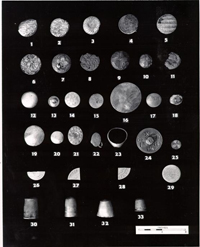 Figure 1. Buttons, Weights, Jewelry and Coins; Brass and Silver.
Figure 1. Buttons, Weights, Jewelry and Coins; Brass and Silver.
Figure 2. Buckles, Personal and Equestrian
- 1.Portion of brass shoe buckle, the front convex and with a single groove close to the edge.
Date of Deposit: post 1825. 5899 E.R. 1009B-9.N. - 2.Cast brass shoe buckle with linear decoration broken at intervals by groups of three diagonal lines.
Date of deposit: post 1750. 5900 E.R. 1054G-9.N. - 3.Two fragments of brass shoe buckle with drilled and engraved decoration.
Disturbed deposit. 5901 E.R. 1044- 9.N.
Date of deposit: post 1815. E.R. 1047A-9.N. - 4.Portion of small, squarish, cast, brass shoe buckle with rococo design. The remains of the iron pivot can been seen in the lower hole.
Date of deposit: post 1750. 5902 E.R. 1011E-9.N. - 5.Portion of cast brass shoe buckle with relief decoration of circles and squares. A military buckle was found at the Hubard site [6219 E.R. 1573G-2.P.] in a deposit made post 1760.
Date of deposit: post 1815. 5903 E.R. 1030E-9.N. - 6.Corner of cast, silver-plated brass shoe buckle with filigree design.
Date of deposit: post 1750. 6214 E.R. 1116B-9N. - 7. Small, brass knee buckle with cast design of three rosettes in each corner.
Date of deposit: post 1820. 5904 E.R. 1002J-9.N. - 8. Brass shoe buckle fragment with cast ribbed decoration.
Date of deposit: post 1785. 6215 E.R. 1119M-9.N. - 9.Cast brass belt buckle, waisted at the fixed post and with fan-like device at the center of each side.
Date of deposit: post 1780. 5905 E.R. 1013F-9.N. - 10. Small iron buckle, with rectangular-sectioned sides and middle. The iron tang was attached by folding it around the central bar.
Date of deposit: post 1750. 5909 E.R. 1011E-9.N. - 11. D-shaped brass buckle, probably from harness. On the curve there is a single groove close to the end and a V-shaped notch in the center to receive the tang.
Date of deposit: post 1750. 5906 E.R. 1004K-9.N. - 12.Rectangular single-sided brass buckle, the post recessed and cast with the frame.
Date of deposit: post 1750. 5907 E.R. 1030C-9.N. - 13. D-shaped brass buckle with post recessed and cast with the frame.
Date of deposit: post 1830. 5908 E.R. 1013A-9.N. - 14.Iron harness buckle with rectangular sectioned tang.
Date of deposit: post 1820. 5910 E.R. 1051A-9.N. - 15. Iron harness with rectangular sectioned tang.
Date of deposit: post 1760. 5911 E.R. 1039J-9.N. - 16. Iron harness buckle with the side to which the tang is attached shorter than its opposing side.
Date of deposit: post 1750. 5912 E.R. 1137E-9.N.
Figure 3. Personal Objects and Toys
- 1. Marble of buff clay.
Date of deposit: post 1770 5913 E.R. 1026B-9.N. - 2. Red clay marble.
Date of deposit: post 1800. 5914 E.R. 1001D-9.N. - 3. Coil of braided brass wire consisting of three braids of six wires each, the ends twined together to form a circle. The same deposit yielded a similar coil [6216 E.R. 1011E-9.N.] and another was found on the Charlton site in a deposit made post 1785 [6218 E.R. 1147G-9.P.]. An example excavated at the Hubard site was identical and was likewise in a mid-eighteenth century deposit [6217 E.R. 1611K-2.P.]. From the Geddy site came a coil made with twisted wire but from a deposit of a similar date [6220 E.R. 1350H-19.B.]. It is likely that they formed part of bindings near the heads of canes or walking sticks.
Date of deposit: post 1750. 5915 E.R. 1001G-9.N. - 4. Rest from smoker's brazier. For details see Figure 4a.
- 5. & 6. Portions of cast brass handles (?), both flattened in section at one end and rounded at the other, and broken at both. Three more small fragments [6221-6223 E.R. 1012D-9.N.] were found in E.R. 1012D-9.N. together with
fragments of crucible, molten brass, slag and No. 7.
Date of deposit: post 1750. 5916 E.R. 1012E-9.N.
Date of deposit: post 1785. 5917 E.R. 1012D-9.N. - 7.Small portion of brass object which would appear to be part of the rim of a sloping sided vessel. Two other similar fragments were found in the same deposit together with No. 5. A larger portion was found on the site of the Millinery Shop [6242-17i].
Date of deposit: post 1785. 5918 E.R. 1012D-9.N. - 8.Portion of cast brass ring of uncertain use. Found in association with No. 6.
Date of deposit: post 1750. 5920 E.R. 1012E-9.N. - 9.Shell of the Indo-Pacific money cowrie (Cypraea moneta Linne). Three other examples were found in abutting layers [6222 E.R. 1029E-9.N., 6223 E.R. 1141L-9.N. and 6224 E.R. 1029D-9.N.]. Three examples were excavated at the Chiswell site from a deposit made post 1770 [6225, 6226, 6227, E.R. 1613B-2.H.].
Date of deposit: post 1760. 5921 E.R. 1029G-9.N. - 10."Stone," probably from ring, clear glass and pyramidal with convex back.
Date of deposit: post 1755. 5922 E.R. 1148F-9.N. - 11.Round blue glass bead, slightly flattened at the top and bottom.
Date of deposit: post 1760. 5919 E.R. 1118P-9.N. - 12.A cylindrical bone case, probably for needles or bodkins with lathe-turned decoration of ridges and grooves. Found in association with No. 13.
Date of deposit: post 1800. 5931 E.R. 1001D-9.N. - 13. Circular lid of bone object, possibly part of a glove powdering flask similar to that shown in Country Life, Vol. CXLVI No 3787 October 2nd 1969 p 499. There are screw threads on the exterior. Found in association with No. 12.
Date of deposit: post 1800. 5923 E.R. 1001D-9.N. - 14. Portion of a double-sided bone comb. The teeth in one row are larger and more widely spaced than those in the other. Another bone comb, this time with both rows of tooth identically spaced was found at the Charlton Site in a deposit made about 1820 [6228 E.R. 1145L-9.P.].
Date of deposit: post 1765. 5924 E.R. 1054C-9.N. - 15. Fragment of a domed bone lid, the outside decorated by multiple lathe-turned ridges and grooves.
Disturbed deposit. 5925 E.R. 1030C-9.N. - 16. Iron jew's harp, the tang missing.
Date of deposit: post 1790. 5926 E.R. 1158B-9.N. - 17. Brass jew's harp, the tang missing.
Date of deposit: post 1785. 5927 E.R. 1012J-9.N. - 18. Brass eye from a hook and eye fastening.
Date of deposit: post 1800. 5928 E.R. 1001D-9.N. - 19. Flat lead object, rectangular with cut-off corners, each of the shorter sides has a notch, these are joined by a groove. There is a corresponding groove on the other side.
Disturbed deposit. 5929 E.R. 1030A-9.N. - 20. Lead bale seal with most of the front broken off leaving only the center part, which would have fitted into a hole in the back when the seal was clamped shut. In the center is the mark [INSERT FIGURE], which would presumably have been the well-known merchant's mark when complete. To the left of this is an R, and to the right an M. the back is unmarked.
Date of deposit: post 1850. 5930 E.R. 1141D-9.N. - 21. Pince-nez with the lenses set in brass frames, rounded on their outer edges. The glass is almost opaque due to surface decay but appears to have had a slight
magnifying effect.
Date of deposit: post 1810. 5932 E.R. 1056A-9.P.
Figures 4 and 4a Smoker's Braziers.
Smoker's brazier in the Department of Collections (1952-106) and fragments of two similar items1 found at Wetherburn's Tavern.
Portions of other identically decorated braziers have been found on other Williamsburg sites, namely at the Moir Shop [6238-8.G.4.], the Governor's Palace [6240-20.A.17.], the Anthony Hay Site see HAY Volume II Figure 5 No 21 [6235 E.R. 229-28.D.] from a deposit of the mid-eighteenth century and the Geddy site [6237 E.R. 1346Z-19.B.]. A fragment with a different decoration was excavated in the area of Market Square Tavern [6243-12.A.].
| Date of deposit post 1785 | 5026 E.R. 1012D-9.N. |
| Date of deposit post 1750 | 5024 E.R. 1009E-9.N. |
| Date of deposit post 1785 | 5025 E.R. 1020D-9.N. |
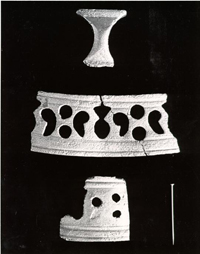 Figure 4a. Smoker's Brazier Fragments; Brass.
Figure 4a. Smoker's Brazier Fragments; Brass.
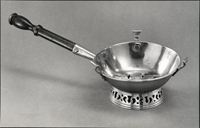 Figure 4b. Smoker's Brazier in the Department of Collections; Brass & Ebony.
Figure 4b. Smoker's Brazier in the Department of Collections; Brass & Ebony.
Figure 5. Domestic and Military Objects
- 1.Stem (two part) of brass candlestick with knop, hexagonal baluster, and annulated knop beneath a tulip-shaped socket with thickened rim. Wetherburn booklet page 28 fig 16.
Date of deposit: post 1770. 5021 E.R. 1020K-9.N. - 2.Hexagonal baluster from the two-piece stem of brass candlestick. Most candlesticks with this type of stem were made in the second quarter of the eighteenth century.
Date of deposit: post 1800. 5933 E.R. 1001D-9.N. - 3.Tulip-shaped socket from brass candlestick with widely flaring mouth. The socket was cast in two parts joined together by brazing.
Date of deposit: post 1785. 5934 E.R. 1011D-9.N. - 4.Two-piece stem of brass candlestick with large knop beneath an acorn knop and waisted socket with thickened rim. At the bottom of the stem is a small shank with a spiral groove, made to screw into a hole in the base. Wetherburn booklet page 28 figure 16.
Date of deposit: post 1760. 5020 E.R. 1165G-9.N. - 5. Brass candle snuffers, complete but for the eyes. On the right-hand blade is the rectangular box with rounded top, and on the left blade the vertical pad of corresponding shape. The pad and the left-hand blade end both
fit inside the box, a notch being cut out of the box to allow the blades to meet. As a flaw in casting left a lump of brass on the front inside corner of the box, the front edge of the pad was ground away to allow the snuffers to close completely. The two blades are joined by a brass rivet, and there is a X mark on right-hand blade, between the rivet and the box. Wetherburn booklet page 28 figure 16.
Date of deposit: post 1770. 5022 E.R. 1048H-9.N. - 6. Pair of brass candle snuffers, viewed from the right side to show the shape of the box. Attached to the tip of the left blade is a flat brass pad fitting into the open-sided box on the right blade. The left-hand blade, with its handle and pad, is cast in one piece, but the right-hand blade and box are cast separately and soldered together. Wetherburn booklet Page 28 figure 16.
Date of deposit: post 1785. 5023 E.R. 1012J-9.N. - 7. Semicircular brass pad from a pair of candle snuffers, with the end of the left-hand blade to which it was attached. The pad and blade were cast together, with the outside edge of the blade having a decorative scalloped edge. Part of a rivet hole 1/8" wide remains at the broken end of the blade.
Disturbed deposit. 5936 E.R. 1163-9.N. - 8.Semicircular box from a pair of iron candle snuffers attached to the end of the right-hand blade.
Date of deposit: post 1755. 5935 E.R. 1165G-9.N. - 9. & 10.See figure 4a.
- 11.Fragment of a copper alloy clock bell.
Date of deposit: post 1740. 5937 E.R. 1128H-9.N. - 12. Copper alloy leg from a tripod cauldron.
Date of deposit: post 1785. 5938 E.R. 1012D-9.N. - 13. The upper half of a heavy brass butt hinge with shell and leaf finial and a portion of the plate with the edges of two countersunk holes. The Museum National dos Coches in Lisbon identified this as being a coach door hinge of the first half of the eighteenth century. Similar hinges have been found on several Williamsburg sites, namely Peter Hay's Shop [2705-11.D.2.], the stables of the Governor's Palace [5186-20.A.27], the Blaikley-Durfey House [5187-14.C.] and the Geddy House [5190-E.R. 1361C-19.B].
Date of deposit: post 1770. 5189 E.R. 1116C-9.N. - 14. Sheet brass throat mounting from a leather scabbard.
Disturbed deposit. 5939 E.R. 1016-9.N. - 15. Brass chape from the end of a leather scabbard, with an
asymmetrical bag-shaped end. The letters A.D.K. are stamped near the bottom edge.
Date of deposit: post 1785. 5940 E.R. 1054B-9.N. - 16.Lower portion of chape from a leather scabbard or sheath. A hollow, copper, ball-shaped finial is soldered to the sheet brass scabbard cover, the latter with a stamped design showing the lower part of a standing eagle and shield against a background of vertical ribbing.
Date of deposit: post 1830. 5941 E.R. 1124C-9.N. - 17.Fragmentary sheet brass object, possibly part of an unfinished rifle or musket butt-plate, with the heel end and part of the tang missing. It is broken off at both ends, with remains of two screw holes at the lower break.
Date of deposit: post 1750. 5942 E.R. 1011F-9.N. - 18. Folded brass object, possibly used to protect the edge of a trunk with three screw holes on each end. On the back are shallow marks from a rectangular punch or similar tool, all angled diagonally across the plate.
Date of deposit: post 1785. 5943 E.R. 1020D-9.N. - 19.For details, see Figure 4a.
- 20.Spout and body fragment from brass kettle.
Date of deposit: post 1750. 6230 E.R. 1114M-9.P. - 21.Brass spigot, the key still in position. Wetherburn
booklet Figure 15.
Date of deposit: post 1820. 5027 E.R. 1052B-9.P. - 22. Hollow barrel section of brass spigot similar to No. 21.
Date of deposit: post 1755. 5944 E.R. 1123E-9.N. - 23. Fragment of sheet brass with rivets around the edge, possibly used as a patch on a brass cooking pot.
Date of deposit: post 1800. 6229 E.R. 1012N-9.N.
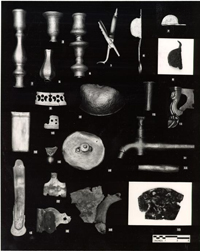 Figure 5. Domestic and Military Objects; Brass, Copper and Iron.
Figure 5. Domestic and Military Objects; Brass, Copper and Iron.
Figure 6. Furniture Hardware
- 1.Brass teardrop handle of late seventeenth-century form.
Date of deposit: post 1810. 4020 E.R. 1141G-9.N. - 2. Brass bail handle with upturned ear terminal, baluster and knop. This type of handle was common on furniture of the first half of the eighteenth century.
Date of deposit: post 1785. 4021 E.R. 1012J-9.N. - 3. Brass post with attached nut.
Date of deposit: post 1830. 4022 E.R. 1120H-9.N. - 4. Brass handle, probably from a rim lock. For an eighteenth century lock with handle of similar shape, see Nutting, Nos. 4411-12.
Date of deposit: post 1830. 4023 E.R. 1053B-9.P. - 5. Portion of brass bail handle with inturned ends, typical form of the Hepplewhite period.
Date of deposit: post 1810. 4024 E.R. 1165T-9.N. - 6. Brass handle, possibly from rim lock.
Date of deposit: post 1805. 4025 E.R. 1180A-9.C. - 7. Portion1 of pierced brass backplate of mid-eighteenth-century form.
Date of deposit: post 1760. 6149 E.R. 1067A-9.N. - 8.Round brass upholstery tack, shank missing.
Date of deposit: post 1810. 4027 E.R. 1043M-9.N. - 9. Oval brass keyhole escutcheon with four holes and beveled edges.
Date of deposit: post 1830. 4026 E.R. 1125H-9.N. - 10. Brass escutcheon with two holes, probably from bureau or bookcase.
Date of deposit: post 1760. 5945 E.R. 1125E-9.N. - 11. Oval brass escutcheon with four boles. This could be an unsuccessful casting, being of irregular shape and thickness.
Date of deposit: post 1750. 5946 E.R. 1011R-9.N. - 12. Brass ring drawer pull, attached to a round, domed brass plate.
Date of deposit: post 1770. 5947 E.R. 1026B-9.N. - 13. Brass curtain ring, flat section.
Date of deposit: post 1815. 5348 E.R. 1030E-9.N. - 14. Portion of conical, brass curtain tie-back hook, the shaft missing.
Date of deposit: post 1785. 5949 E.R. 1119M-9.N. - 15. Brass coat-hook with heart-shaped plate with three counter-sunk holes.
Disturbed deposit. 5950 E.R. 1164-9.N.
Figure 7. Harness, Domestic, Indian and Military Objects
- 1. Portion of thin, oval brass plate, possibly a butt-plate from musket or rifle.
Date of deposit: post 1760. 5958 E.R. 1125E-9.N. - 2. Brass screw with circular head and central groove.
Date of deposit: post 1810. 5951 E.R. 1179K-9.N. - 3. Brass folding rule hinge. Two similar hinges were found at the Anthony Hay Site, see HAY, Volume III, Part 1, Figure 5, Nos. 7 & 8 [6146 E.R. 263-28.D and 6142 E.R. 221-28.D].
Date of deposit: post 1815. 5952 E.R. 1165T-9.N. - 4. Brass thimble from musket or rifle.
Date of deposit: post 1785. 5953 E.R. 1012D-9.N. - 5. Brass counterguard and single quillon from hilt of sword or dagger. The shield-like mark above the quillon is illegible.
Date of deposit: colonial. 5954 E.R. 1011H-9.N. - 6.Brown, French musket flint.
Date of deposit: post 1785. 5955 E.R. 1011D-9.N. - 7. Brown, French musket flint, smaller than No. 6.
Date of deposit: post 1800. 5956 E.R. 1001D-9.N. - 8.Portion of copper handle from a kettle or cauldron with partial remains of copper rivet still attached on inside.
Disturbed deposit. 5957 E.R. 1012-9.N. - 9. Portion of curving brass casting, possibly for handle or hook.
Disturbed deposit. 5959 E.R. 1008A-9.N. - 10. Copper or copper alloy knob, possibly from drawer or slide pull, heavily burnt. An identical knob of brass was found on the same site [6234 E.R. 1014D-9.N.] in a disturbed deposit.
Date of deposit: post 1750. 5960 E.R. 1011E-9.N. - 11. & 12.Shell-shaped brass harness ornaments, each with a pair of tangs for attachment.
Date of deposit: post 1765. 5961 E.R. 1029E-9.N.
Disturbed deposit. 5962 E.R. 1115 -9.N. - 13. Round, flat brass tack (shank missing) for furniture or coach upholstery.
Date of deposit: post 1755. 5963 E.R. 1165G-9.N. - 14. Domed, brass upholstery tack, shank missing.
Date of deposit: post 1785. 5964 E.R. 1108J-9.N. - 15. Round, brass harness fitting with two brass tangs for attachment.
Disturbed deposit. 5965 E.R. 1052E-9.N. - 16. Domed, brass boss from curb bit with two concentric circles and a small nipple. Only one of the lugs remains with a single central hole. No. 18 is a similar boss but
without the nipple and with a rounded lug.
Disturbed deposit. 5966 E.R. 1107-9.N. - 17. Circular brass plate with radiating shallow grooves, central hole and four semicircular orifices near the edge. Possibly a backplate for a drawer pull of the late seventeenth to early eighteenth century teardrop type.
Date of deposit: post 1750. 5967 E.R. 1123M-9.N. - 18. Domed brass boss1 from a curb bit, decorated only with concentric circles near the edge, one lug missing. No. 16 is a similar boss, but with a central nipple. For a similar boss found in a mid eighteenth century deposit see HAY Volume III Part 2 Figure 61 No 13 [6233 E.R. 229-28.D.].
Date of deposit: post 1765. 5988 E.R. 1135R-9.N. - 19. Indian projectile point of pale grayish-pink quartzite, with a short broad tang and a pointed blade. The entire surface is covered with secondary flanking.
Date of deposit: post 1755. 5969 E.R. 1165G-9.N.
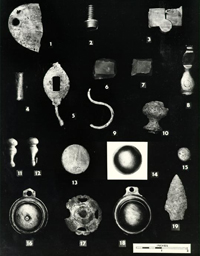 Figure 7. Harness, Domestic, Indian and Military Objects; Brass and Stone.
Figure 7. Harness, Domestic, Indian and Military Objects; Brass and Stone.
Figure 8. Cutlery
- 1. Two-tined fork with two-piece bone handle attached to the tang by three iron rivets and decorated with incised cross-hatching.
Date of deposit: post 1825. 6154 E.R. 1005C-9.N. - 2. Handle and shank of fork with rounded, two-piece bone handle attached to the tang by two iron rivets and decorated with an incised basket-weave pattern.
Disturbed deposit. 6155 E.R. 1137-9.N. - 3.Small fork with one-piece, slightly pistol-grip and faceted bone handle, and narrow tapering shank.
Date of deposit: post 1765. 6160 E.R. 1026C-9.N. - 4.Knife (blade missing) with round shank and large, one-piece, pistol-grip bone handle. Found in association with No. 9.
Date of deposit: post 1780. 6158 E.R. 1008D-9.N. - 5. Two-tined fork with pointed tang, indicating that the missing handle was made in one piece.
Date of deposit: post 1810. 6173 E.R. 1011B-9.N. - 6.Badly rusted remains of two-tined, iron fork. The one-piece handle is missing.
Date of deposit: post 1820. 6159 E.R. 1147A-9.N. - 7. Iron knife (handle missing) with pointed tang and rounded shank. The blade is angled in a poor condition.
Found in association with No. 17.
Date of deposit: post 1755. 6156 E.R. 1165G-9.N. - 8. Fragmentary iron knife with flat tang and remains of two-piece bone handle.
Date of deposit: post 1780. 6162 E.R. 1150E-9.N. - 9. Knife (blade missing) with round shank, the two-piece bone handle attached by three iron rivets. Found in association with No. 4.
Date of deposit: post 1750. 6157 E.R. 1108D-9.N. - 10. Portion of knife (blade missing) with two-piece bone handle (incomplete) decorated with a series of incised crosses and attached by an unknown number of iron rivets.
Date of deposit: post 1780. 6161 E.R. 1112B-9.N. - 11. One-piece cutlery handle made from an antler.
Date of deposit: post 1720. 6164 E.R. 1066N-9.N. - 12. Small, pistol-grip, two-piece, bone handle, formerly attached to the flat tang of a knife or fork by two iron rivets.
Disturbed deposit. 6166 E.R. 1070-9.N. - 13. Small, one-piece, pistol-grip, bone cutlery handle.
Date of deposit: post 1765. 6169 E.R. 1029E-9.N. - 14. Oval end of handle of crude, pewter, desert spoon with
central rib on the underside.
Date of deposit: post 1780. 6171 E.R. 1020K-9.N. - 15. Small pair of needlework scissors in poor condition.
6163 E.R. 1165T-9.N. - 16. Scissors1, oval eyes, shanks with ridges, blades pointed.
6172 E.R. 1001E-9.N., 1145X-9.P. - 17. Tailors scissors, oval eyes, the blades cut at an oblique angle. Found in association with No. 7.
Date of deposit: post 1755. 6165 E.R. 1165G-9.N. - 18. Half of pair of large shears, the blade triangular.
6168 E.R. 1009S-9.N. - 19.Brass folding penknife, two plates probably of tortoiseshell or bone were attached to the brass frame and held down on each side by an oval brass mount.
6167 E.R. 1130K-9.N. - 20. Large folding razor with antler plates, both blades fragmentary.
Date of deposit: post 1810. 6179 E.R. 1014D-9.N.
Figure 9. Keys and Architectural Objects
- 1.Large iron key for stock-lock, the oval bow somewhat out of shape.
Date of deposit: post 1785. 6176 E.R. 1012J-9.N. - 2.Iron key, the web solid, the bow out of shape.
Date of deposit: post 1820. 6180 E.R. 1009A-9.N. - 3.Iron key in poor condition, the bow now missing.
Date of deposit: post 1760. 6178 E.R. 1165G-9.N. - 4.Iron key with round bow and solid web.
Date of deposit: post 1815. 6182 E.R. 1121P-9.N. - 5. Small iron key, solid web and oval bow.
Date of deposit: post 1760. 6184 E.R. 1049P-9.N. - 6. Small iron key, with oval bow.
Date of deposit: post 1785. 6186 E.R. 1141L-9.N. - 7.Small iron key, the semi-oval bow not now complete.
Date of deposit: post 1750. 6177 E.R. 1012E-9.N. - 8. Small iron rim lock, the mechanism rusted solid.
Date of deposit: post 1760. - 9.Iron handle of the type used in coffins.
Date of deposit: post 6183 E.R. 1011F-9.N. - 10. Iron corner bracket, fragmentary, with single nail still in position.
Date of deposit: post 1780. 6185 E.R. 1020K-9.N. - 11. Heavy iron strap hinge, end missing, three countersunk holes.
Date of deposit: post 1750. 6187 E.R. 1123M-9.N. - 12. Offset iron strap hinge, terminal missing.
Date of deposit: post 1760. 6188 E.R. 1035D-9.N. - 13. Iron butt hinge, four holes on each plate.
Disturbed deposit. 6193 E.R. 1096-9N. - 14. Iron butterfly hinge, five holes on each plate.
Date of deposit: post 1760. 6190 E.R. 1011R-9.N.
Figure 10. Horseshoes, Stirrups, Tools and Shovel
- 1.Iron stirrup, the loop missing, the sides oval and with a gridiron platform, one exterior bar now missing. Found in association with Nos. 5, 6, 7, 9 and 11.
Date of deposit: post 1760. 6189 E.R. 1165G-9.N. - 2.Iron stirrup in very poor condition, the platform solid, the loop missing.
Date of deposit: post 1770. 6192 E.R. 1069B-9.N. - 3.Iron stirrup, the loop incomplete, the platform solid, rounded sides.
Date of deposit: post 1770. 6196 E.R. 1165F-9.N. - 4. Heavy iron stirrup with solid, ogee sides, open oval platform, rectangular backward curving loop. Probably a cavalry stirrup.
Date of deposit: early nineteenth century 6198 E.R. 1130G-9.N. - 5.One branch of iron horseshoe with fullering and four holes. Found in association with Nos. 1, 6, 7, 9 and 11.
Date of deposit: post 1755. 6191 E.R. 1165G-9.N. - 6.One branch and iron horseshoe with calkin, fullered, four holes, two of which still contain nails. Found in association with Nos. 1, 5, 7, 9 and 11.
Date of deposit: post 1755. 6197 E.R. 1165G-9.N. - 7. Iron horseshoe (key type) spreading inward at the heels, showing signs of considerable wear at the toe, fullered with three holes on one branch and four on the other. Found in association with Nos. 1, 5, 6, 9 and 11.
Date of deposit: post 1755. 6195 E.R. 1165G-9.N. - 8.Iron horse or pony shoe, wear at the toe, fullered with three holes on each branch. Incomplete at the ends.
Date of deposit: post 1785. 6199 E.R. 1012J-9.N. - 9. Iron spoon bit, the blade and the bit end are incomplete. Found in association with Nos. 1, 5, 6, 7 and 11.
Date of deposit: post 1755. 6201 E.R. 1165G-9.N. - 10. Middle portion of triangular iron file, both the handle and tip are missing.
Date of deposit: post 1790. 6200 E.R. 1211S-9.N. - 11. Handle and blade of small iron fireplace shovel, the blade flares and has upturned edges. There is a mushroom knop on the end of the round-sectioned handle. Found in association with Nos. 1, 5, 6, 7 and 9.
Date of deposit: post 1755. 6202 E.R. 1165G-9.N.
Figure 11. Lid, Carboy Neck and Fish Bone
- 1.Portion of wooden lid of oval box, the hinge broken off together with that section of the lid to which it was attached. Incised on the upper surface in a fine hand is the legend JOHN W and over the latter letter the figures 61.
Date of deposit: post 1750 (or 1761?) 6205 E.R. 1124G-9.N. - 2. Neck and string rim of carboy, the mouth flaring, the string rim flat and horizontal.
Date of deposit: post 1750. 6203 E.R. 1011F-9.N. - 3. Lower pair of dental plates of very large drum (Pogonias cromis). Dr. S. Olsen who kindly provided this identification said that this specimen could have weighed over 60 lbs.
Date of deposit: post 1785. 6204 E.R. 1114C-9.P.
PHOTOGRAPHIC NEGATIVE NUMBERS
| Figure 1 | 67-SMT-193 |
| 2 | 67-SMT-197 |
| 3 | 67-SMT-216 |
| 4a | 68-1474 |
| 4b | 68-INH-3003 |
| 5 | 67-SMT-150 |
| 6 | 67-SMT-231 |
| 7 | 67-SMT-218 |
| 8 | 67-SMT-135 |
| 9 | 67-SMT-133 |
| 10 | 67-SMT-119 |
| 11 | 67-SMT-201 |
